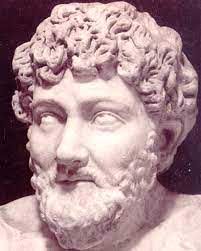Esop-Brief Life Sketch

Esop-Brief Life Sketch
Esop (Aesop) was an ancient Greek storyteller. Nothing is known for certain about his life. Many speculate that he was born into a poor Greek family about 620 years before the birth of Jesus Christ. According to some scholars, Esop was a black man born in Ethiopia, Africa.
From a young age, Aesop could make tales of his own. Wherever he went, he could win the hearts of people by telling his stories. His tales are humorous but full of moral lessons. He was ugly to look at but as a man, he was very wise. He was a keen observer of human behaviour and concocted fine tales on human faults. Of course, Esop did not want to offend the audience in the face, so he took animals and birds as the characters of his stories. His stories had been handed down orally from generation to generation, but after four hundred years of his death, his stories were compiled in writing form. His stories have now been translated into many languages of the world. 0 0 0
N.B. The article originally belongs to the book ‘Introduction to World Personalities‘ by Menonim Menonimus.
Books of Composition by M. Menonimus:
- Advertisement Writing
- Amplification Writing
- Note Making
- Paragraph Writing
- Notice Writing
- Passage Comprehension
- The Art of Poster Writing
- The Art of Letter Writing
- Report Writing
- Story Writing
- Substance Writing
- School Essays Part-I
- School Essays Part-II
- School English Grammar Part-I
- School English Grammar Part-II..
Books of S. Story by M. Menonimus:
Books of Biography by M. Menonimus:
- The World Writers-Brief Biographies
- Introduction to World Writers
- Introduction to World Personalities
- Love of Reputed Persons ..
Related Search:







